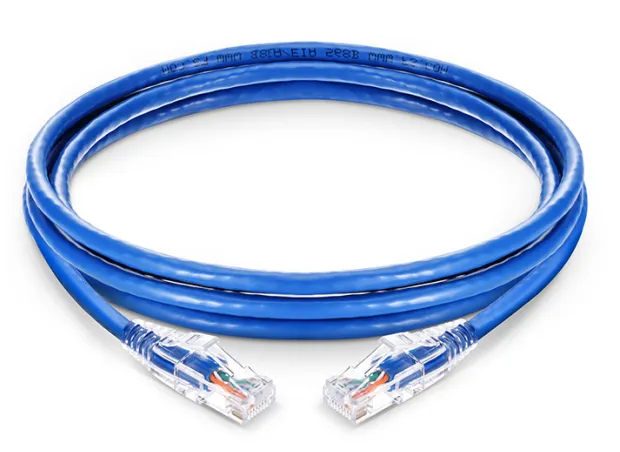
A high-quality ethernet cable is an essential part of a well-functioning LAN network. The cable links your devices within a network. Several types of ethernet cables today have varying capabilities in the distance and speed they can transport signals. CAT6 and CAT8 cables are among the most popular due to their unique features and advantages.
The choice between the CAT8 and CAT6 cable will depend on your needs. A CAT6 ethernet cable supports a maximum distance of 100 meters, a speed of up to 10 Gbps per second, and is compatible with previous cable versions. CAT8 ethernet cables, on the other hand, are the most advanced and recent cables available. They support a speed of up to 40 Gps over a maximum distance of 30 meters.
Here are insights to help you choose between a CAT6 and CAT8 cable.
Table of Contents
Suitability Of A CAT 6 And CAT8 cable
CAT8 ethernet cables are ideal for any application that requires a high bandwidth, like 4k and 8k video streaming, data centers, and online gaming. The cables have significant shielding to reduce electromagnetic interference, making them less vulnerable to signal loss.
CAT6 cables are an old standard that has retained popularity due to their dependable performance and lower cost. However, these cables lack the shielding provided by CAT8 cables, making them a lot more susceptible to electromagnetic interference and signal loss.
Side By Side Feature Comparison
The bandwidth of the cables is a significant distinction. A CAT8 cable has a bandwidth expanding to as high as 2000MHz, while the CAT6 cable’s bandwidth is only up to 500MHz. CAT8 cables can, therefore, handle a lot more data at a go – this is why they are more suitable for high-speed streaming and data transfers.
Another significant difference is their compatibility with the current network infrastructure. CAT8 ethernet cables need a more recent and updated network interface card. They may also fail to be compatible with the older network equipment. CAT6 ethernet cables are more compatible with a wide scope of the existing network infrastructure.
| Feature | CAT8 | CAT6 |
| Maximum Bandwidth | 2000MHz | 500MHz |
| Maximum Data Rate | 40Gbps | 10 Gbps |
| Maximum Transmission Distance | 98 feet (30 meters) | 328 feet (100 meters) |
| Crosstalk | Low | Low |
| Shielding | Shielded | Shielded or unshielded |
- CAT6 cables remain widely used due to their reliable performance; however, their maximum speed is 10Gbps
- CAT8 cables are updated and are currently the fastest option. They also transmit a lot more data compared to CAT6.
- Due to the advanced properties, a CAT 8 cable typically costs more than a CAT 6 cable.
Make The Pick
Making a choice remains dependent on your network needs. However, with all facts laid down, CAT8 cables are superior to CAT6 for multiple reasons. The speed of CAT8 ethernet cables is four times faster than the maximum speed of CAT6 cables. They have a higher rate of data transfer and bandwidth. CAT8 cables are a more suitable choice if you want to future-proof your network. The cables are ideal for data centers. If you’re looking for an ethernet cable for a standard home or smaller office network, the CAT6 can still meet your needs.
RELATED ARTICLES
Latest Articles
 Unlocking Success: Mastering Bank PO Interview PreparationIn EducationApril 24, 2024For banking careers, PO interviews stand as formidable […]
Unlocking Success: Mastering Bank PO Interview PreparationIn EducationApril 24, 2024For banking careers, PO interviews stand as formidable […] The Strategic Value of Purchasing FontsIn TipsApril 18, 2024In today’s visually driven world, fonts are more […]
The Strategic Value of Purchasing FontsIn TipsApril 18, 2024In today’s visually driven world, fonts are more […] Revolutionizing Business: How AI Transforms Customer Experience in the Inflatable IndustryIn BusinessApril 16, 2024Inflatable water slides are the epitome of summer fun, […]
Revolutionizing Business: How AI Transforms Customer Experience in the Inflatable IndustryIn BusinessApril 16, 2024Inflatable water slides are the epitome of summer fun, […] Most Asked Microservice Interview Questions For 2024In TechnologyApril 2, 2024To keep up with changing trends in the tech industry […]
Most Asked Microservice Interview Questions For 2024In TechnologyApril 2, 2024To keep up with changing trends in the tech industry […] Best JavaScript and CSS Library In 2024In TechnologyApril 2, 2024With the ever-expanding functionality of web […]
Best JavaScript and CSS Library In 2024In TechnologyApril 2, 2024With the ever-expanding functionality of web […] Front-End Development Trends to Follow in 2024In TechnologyApril 2, 2024For better engagement, the front-end development of […]
Front-End Development Trends to Follow in 2024In TechnologyApril 2, 2024For better engagement, the front-end development of […] Simplifying Mealtime: Meal Prepping for a Family of FourIn UncategorizedMarch 22, 2024In the hustle and bustle of daily life, planning and […]
Simplifying Mealtime: Meal Prepping for a Family of FourIn UncategorizedMarch 22, 2024In the hustle and bustle of daily life, planning and […] How to Freeze Dry Candy With And Without a Machine?In FoodFebruary 27, 2024A candy lover constantly searches for novel and […]
How to Freeze Dry Candy With And Without a Machine?In FoodFebruary 27, 2024A candy lover constantly searches for novel and […] How to Get Something Out Of Your Eye Immediately?In healthFebruary 27, 2024Getting something inside your eyes can be frustrating […]
How to Get Something Out Of Your Eye Immediately?In healthFebruary 27, 2024Getting something inside your eyes can be frustrating […] The Evolution of Remote Control Technology: From RC Cars to DronesIn TechnologyFebruary 22, 2024Remote control technology has come a long way since […]
The Evolution of Remote Control Technology: From RC Cars to DronesIn TechnologyFebruary 22, 2024Remote control technology has come a long way since […] Unveiling the most popular carnival costumes: A colorful parade of creativityIn FashionFebruary 19, 2024In the world of festivities and merrymaking, few […]
Unveiling the most popular carnival costumes: A colorful parade of creativityIn FashionFebruary 19, 2024In the world of festivities and merrymaking, few […] Custom GPTs: The Next AI Opportunity for BusinessesIn Business, TechnologyFebruary 14, 2024The rise of artificial intelligence has transformed […]
Custom GPTs: The Next AI Opportunity for BusinessesIn Business, TechnologyFebruary 14, 2024The rise of artificial intelligence has transformed […]
stopie.com is a participant in the Amazon Services LLC Associates Program, an affiliate advertising program designed to provide a means for sites to earn advertising fees by advertising and linking to Amazon.com.
Clicking on an Amazon link from stopie.com does not increase the cost of any item you purchase.
We will only ever link to Amazon products that we think our visitors may be interested in and appreciate learning more about.



